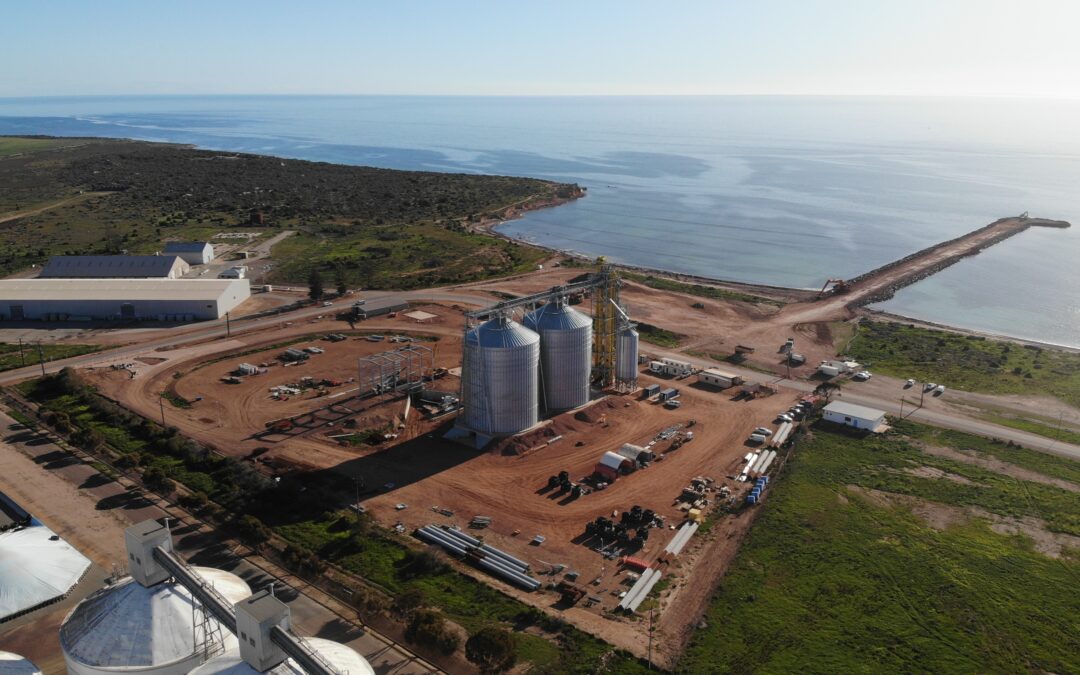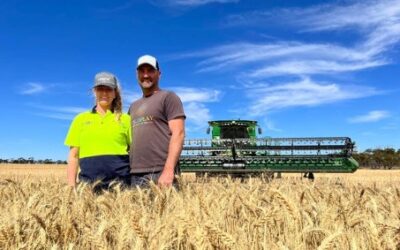T-Ports is gearing up for the 2022 grain harvest, its fourth since introducing innovative technology disrupting the grain supply chain, with its Wallaroo bunker site on track for grower receivals.
T-Ports Chief Executive Officer Scott McKay said feedback from Yorke Peninsula and Mid North growers indicated strong support for new competition in the supply chain.
“We have been meeting with growers over recent weeks and we’re pleased to be able to tell them we’ll be ready to receive their grain this year,” he said.
“Construction on the bunker site and work on the port site is on track. We expect shipping from Wallaroo to commence later in 2023 and have been in regular communication with our clients to update them on the timelines.”
Mr McKay said the company had recently started accepting shipping capacity applications for the 22/23 season, with seven buyers now on board at T-Ports sites.
“We’ll be using the same transhipment vessel, MV Lucky Eyre, for shipping grain from Lucky Bay and Wallaroo and will look to manage logistics accordingly,” he said.
“At this stage, we’re accepting bookings for shipping from Lucky Bay and strong demands for expressions of interest for Wallaroo while we work to confirm timeframes.”
Mr McKay said while the company had only made minimal price increases over its first years of operation, an increase in costs meant an unavoidable increase in port handling and shipping charges this year.
“Unfortunately, the reality of doing business in 2022 is that the cost of everything in construction and operations has increased – labour, materials, fuel, accommodation, repairs, maintenance– and we can no longer absorb these costs,” he said.
“The silver lining is that grain prices remain strong, and the season looks on track to deliver average to above-average yields.
“We’re continuing to engage with our key client and grower stakeholders to reinforce our commitment to delivering innovation, competition and value for money.”
The Wallaroo grain export facility will feature steel silos with 20,500 tonnes of grain capacity and a rock causeway with grain conveyed to a ship loader for loading onto the transhipment vessel. A nearby site will feature six bunkers with a total of 240,000 tonnes of grain capacity.




